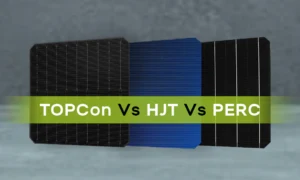Introduction
The real estate industry has undergone a remarkable transformation in recent years, driven largely by technological advancements. As we move further into the digital age, real estate apps have become an integral part of the property market, offering convenience, efficiency, and a wealth of information to both buyers and sellers. In this article, we will explore the trends that are shaping the next generation of real estate apps, revolutionizing how we buy, sell, and interact with properties.
1. Augmented Reality (AR) and Virtual Reality (VR) Integration
One of the most exciting trends in real estate apps is the integration of augmented reality (AR) and virtual reality (VR) technologies. These technologies are changing the way potential buyers experience properties, allowing them to take virtual tours from the comfort of their homes. AR overlays information onto the real world, providing details about a property’s history, pricing trends, and nearby amenities. VR, on the other hand, immerses users in a completely virtual environment, enabling them to explore a property as if they were physically present.
Real estate apps with AR and VR capabilities offer a more interactive and engaging experience, helping buyers make informed decisions. For example, instead of traditional 2D floor plans, users can virtually walk through a property, getting a realistic sense of the space and layout. This trend not only enhances the buying process but also benefits sellers by attracting more qualified leads who have a deeper understanding of the property before scheduling physical visits.
2. Artificial Intelligence (AI) for Personalized Recommendations
Artificial Intelligence (AI) is playing a crucial role in shaping the next generation of real estate apps. Machine learning algorithms analyze user behavior, preferences, and historical data to provide personalized recommendations. Whether it’s suggesting properties that match a buyer’s criteria or estimating the optimal listing price for a seller, AI enhances the efficiency of the real estate market.
Real estate apps leverage AI to streamline the search process for buyers. By understanding user preferences and behavior, these apps can recommend properties that align with individual tastes and requirements. On the seller’s side, AI algorithms help determine the optimal listing price based on market trends, location, and property features. This not only speeds up the selling process but also ensures that properties are competitively priced.
3. Blockchain for Transparent and Secure Transactions
Blockchain technology is revolutionizing the real estate industry by providing transparency, security, and efficiency in transactions. Real estate apps are increasingly incorporating blockchain to streamline the buying and selling process, from property listings to closing deals. Blockchain’s decentralized and tamper-proof nature ensures that all transaction data is secure and transparent, reducing the risk of fraud and improving trust between parties.
Smart contracts, a key feature of blockchain, automate and enforce contractual agreements, eliminating the need for intermediaries. This not only accelerates the transaction process but also reduces costs associated with legal and administrative tasks. Blockchain also enables the creation of tokenized assets, allowing investors to buy and sell fractions of real estate properties, opening up new opportunities for a broader range of investors.
4. 3D Property Scanning and Modeling
The next generation of real estate apps is utilizing advanced 3D scanning and modeling technologies to create immersive and detailed representations of properties. Instead of relying solely on photographs, these apps allow users to explore every corner of a property in a three-dimensional space. This trend enhances the virtual viewing experience and provides a more accurate representation of the property’s layout and features.
3D property scanning is particularly beneficial for remote buyers who cannot physically visit a property. It offers a comprehensive view of the space, including details such as room dimensions, ceiling heights, and the flow of natural light. Additionally, 3D modeling can be used to visualize potential renovations or interior design changes, giving buyers a better understanding of the property’s potential.
5. Location-Based Services and Geospatial Technology
Location is a critical factor in real estate, and the next generation of apps is leveraging location-based services and geospatial technology to provide users with valuable information about neighborhoods and surrounding amenities. These apps use geolocation data to offer insights into nearby schools, restaurants, public transportation, and other essential services, helping buyers make more informed decisions about a property’s suitability.
Moreover, real estate apps are incorporating geospatial technology to analyze market trends and predict future property values. Machine learning algorithms can process vast amounts of data, including historical sales, neighborhood developments, and economic indicators, to generate accurate predictions about property values in specific areas. This trend not only benefits buyers but also empowers sellers and investors with valuable market intelligence.
6. Integration of Chatbots and Virtual Assistants
The integration of chatbots and virtual assistants is becoming increasingly prevalent in real estate apps, enhancing the overall user experience. These AI-powered tools provide instant responses to user queries, whether it’s about property details, mortgage information, or the status of a transaction. Chatbots can engage with users 24/7, offering immediate assistance and speeding up the decision-making process.
Virtual assistants take this a step further by offering personalized guidance throughout the entire real estate journey. From property search to closing the deal, virtual assistants can provide insights, reminders, and relevant information, ensuring a smooth and efficient experience for users. This trend not only saves time for both buyers and sellers but also contributes to a more user-friendly and accessible real estate ecosystem.
7. Sustainable and Smart Homes Integration
With a growing emphasis on sustainability and smart living, the next generation of real estate apps is showcasing properties with eco-friendly features and smart home technologies. These apps highlight energy-efficient appliances, renewable energy sources, and other sustainable practices, catering to a new generation of environmentally conscious buyers.
Smart home integration, including features like smart thermostats, security systems, and automated lighting, is also a key trend. Real estate apps are increasingly providing information on the level of smart technology a property possesses, allowing buyers to make informed decisions about the convenience and efficiency of their potential future homes.
Conclusion
The evolution of real estate apps is reshaping the way we buy and sell properties, introducing innovative technologies that enhance the overall experience for users. From augmented and virtual reality to artificial intelligence and blockchain, these trends are not only improving efficiency but also increasing transparency and accessibility in the real estate market. As we look toward the future, it’s evident that the next generation of real estate apps will continue to push boundaries, creating a more dynamic and interconnected property landscape for buyers, sellers, and investors alike. Whether you’re a tech enthusiast or a property market professional, staying informed about these trends is essential to navigate the evolving landscape of real estate in the digital age.















